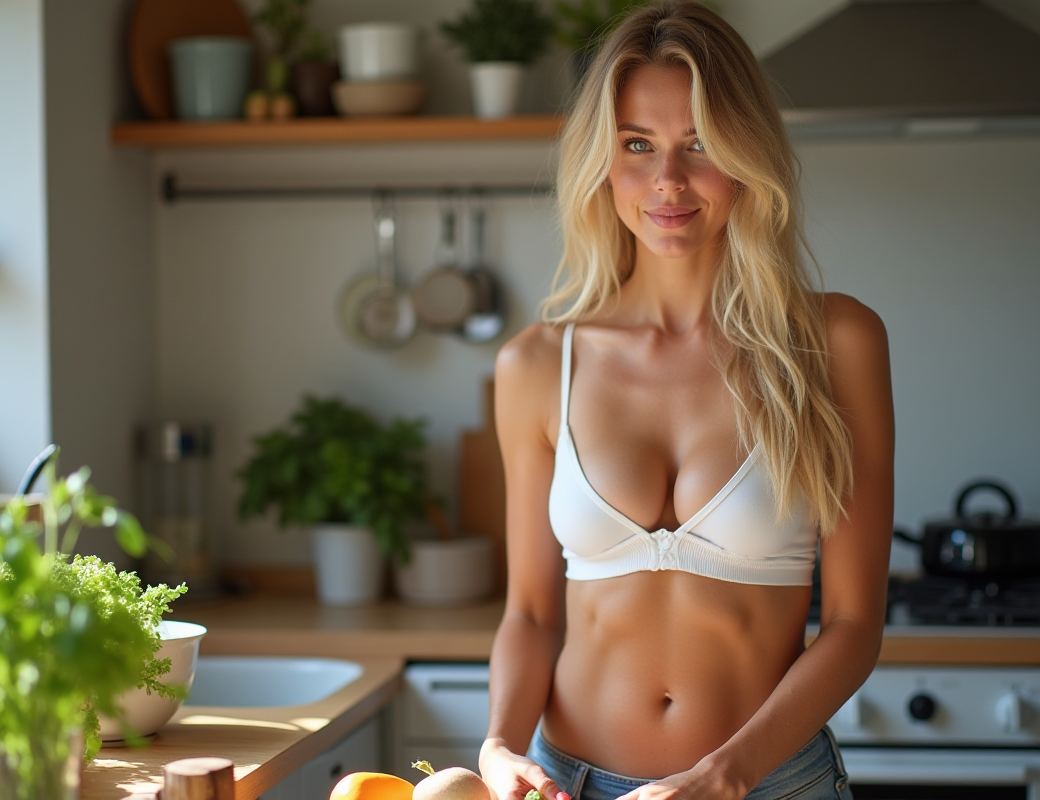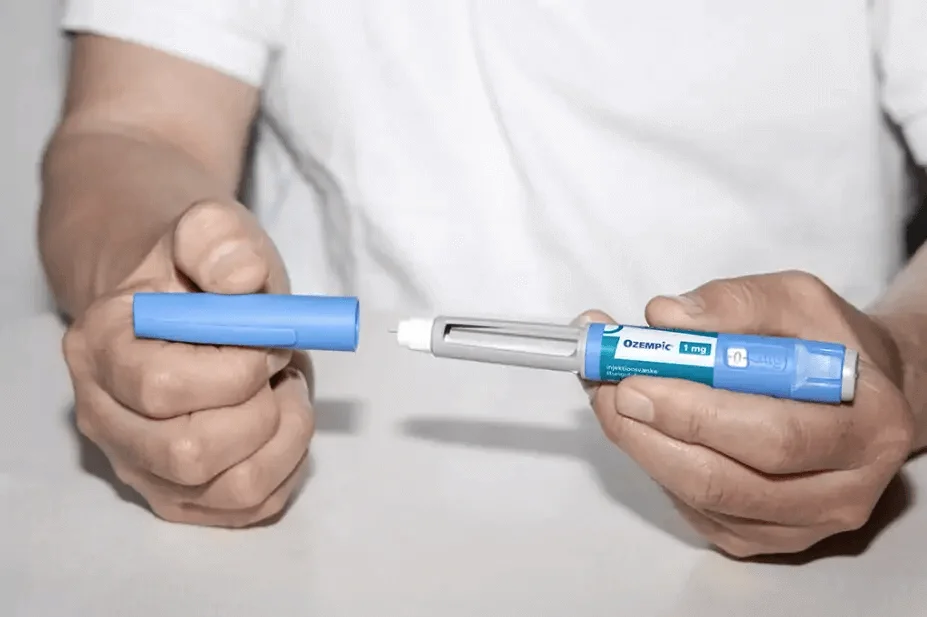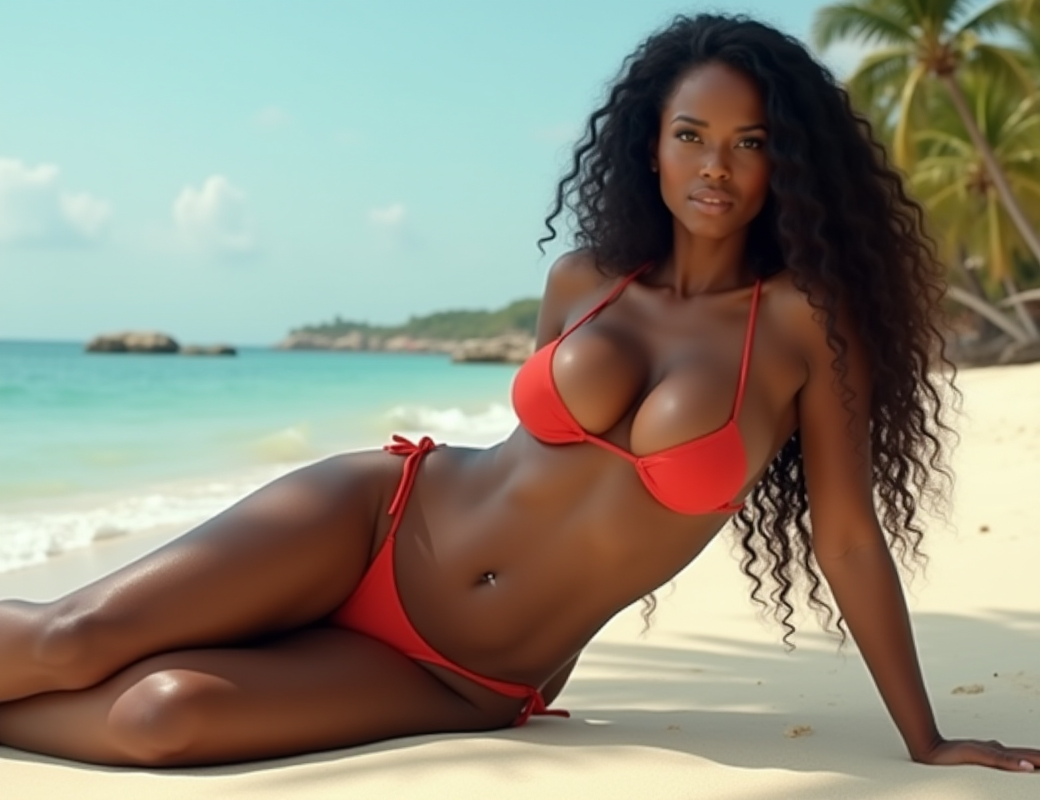Key Takeaways
-
Motherhood changes a body in so many ways, both visible and invisible. Embracing every individual postpartum path takes you from comparison to compassion.
-
Monitor physical and hormonal shifts and establish achievable recovery objectives to nurture immediate healing and sustained well-being.
-
Redirect your attention from appearance to function, appreciating your body’s new strengths, what it can do on a daily basis and the durability you’ve developed as a parent.
-
Identify and express complicated feelings, such as mourning a former you, and engage in journaling, memory work, or dialogue to transform those feelings in positive ways.
-
Curate your support system by reducing unrealistic media, joining mother’s circles to share experiences, and opening up to partners to rebuild your body confidence.
-
When struggles linger, turn to a therapist, postpartum specialists, or support groups and adopt concrete, stepwise plans for self-care and goal achievement.
Mommy makeover about how motherhood changes the way women see their bodies. For many women, their shape, strength and energy shifts after pregnancy and nursing.
These shifts impact self-image, style and daily habits. Social messages and medical advice influence how women receive these transformations.
The sections below explore the physical, emotional and social aspects and provide concrete strategies to adjust and achieve equilibrium.
The Body’s New Story
Motherhood changes the way a woman experiences her body. These changes are both visible and invisible: stretch marks, weight shifts, and scars sit alongside shifts in identity, cognition, and daily function. Matrescence, the psychological and biological transition into motherhood, brackets many of these shifts and illuminates why emotions surrounding the body can be so fraught.
1. Physical Shifts
Stretch marks, scar tissue and weight fluctuations can persist for years. Pregnancy and delivery affect muscle tone and posture. Pelvic floor changes, softened abdominal muscles, and a shifted center of gravity impact movement.
Hormone-fueled shifts to skin and hair may transform how you look in a hurry while the restoration of tissue and strength takes a much slower route. Sleep loss and chronic tiredness visibly affect eyes and skin, and recovery timelines vary widely.
Some women feel close to pre-pregnancy in weeks, while others take months or years. Structural changes can stick. For some, that means adapting tasks to new ceilings, while for others it becomes a new norm of athleticism and swag.
2. Hormonal Waves
Hormones dictate mood, skin oiliness, hair shedding, and energy. Prolactin and oxytocin support breastfeeding and alter sleep and emotional reactivity.
Postpartum hormonal imbalance can fuel anxiety or low mood and distort how a woman views herself. Tracking symptoms such as mood swings, hair loss, and cycle changes helps chart your own patterns and inform conversations with your clinician.
Knowing that hormones skew perception can alleviate blame and indicate focused care or easy lifestyle shifts such as light exercise.
3. Functional Purpose
The body’s role shifts from appearance to function: feeding, lifting, soothing, and moving with a child become priorities. Most moms experience a new strength and stamina, acquired by constant lifting and sleep deprivation.
No matter your daily routine, they require their own brand of strength, lugging a toddler up the stairs, comforting through night wakings, or heading back to work while balancing childcare.
Weightlifting, walking, or easy strengthening often help women feel a return of self and control. Acknowledging these abilities shifts value from appearance to what the body does.
4. Emotional Lens
Emotions color perception: Pride in new capabilities can sit beside grief for a pre-motherhood body. Self-esteem evolves as identity transforms.
Matrescence involves a rewire of roles and self-cognition. Even the brain may exhibit changes, such as decreased gray matter volume in certain regions, which can affect cognition and emotion.
Self-compassion, small goals, and peer support calm emotional roller coasters and cultivate a more stable perspective.
5. Social Mirror
Other people’s comments impact body image. Pressure to ‘bounce back’ and Instagram comparisons erode self-esteem.
Community among other moms and boundaries around uninvited advice safeguard mental real estate for practical, enduring acceptance.
External Influences
External forces mold women’s perception of their bodies post-partum. These forces are media, culture, partners, and general life stresses. They interface with biological shifts and can alter eating, sleeping, and mood cycles that impact body image.
Media Ideals
Popular culture can display a very limited, edited image of postpartum recovery. Celebrity “snap-back” stories showcase rapid weight loss and perfect skin as the standard. Most women have acne, stretch marks, and bodies that change slowly. These portrayals sideline common realities.
Every third woman reports more snacking under stress, and one in four reports reduced appetite in stressful times. These eating shifts can be a direct reaction to pressure magnified by media.
Smaller but visible trends fight back. Body-positive and truthful mom accounts present different shapes and scars and slower timelines. They can minimize comparisons if deliberately observed.
Curate feeds to include diverse voices: real mothers sharing unretouched photos, medical professionals discussing prenatal factors, and mental health advocates explaining the risk of eating disorders linked to stress during pregnancy and postpartum. A purposeful feed helps triage crazy talk.
Cultural Norms
Cultural rules dictate how mothers are supposed to look and act. Some cultures exalt a quick postpartum bounce back, while others honor the signs of motherhood, weight gain, or ‘being filled out’. Traditions and beliefs frame each day—dietary taboos, postpartum confinement, or public norms around breastfeeding—each impacts body image and habits.
Where family conflict, illness, or financial strain exists, stress can disrupt rhythms. Insomnia, anxiety, and progressive weight gain are reported by many who experienced stress in pregnancy and postpartum.
Life course events are important. Shifts such as going back to work, moving, or caring for aging family members disrupt routines and trigger fluctuations in eating and body image. Question norms that seem hurtful. Query which regulations encourage health and which nurture shame.
Partner Perceptions
Partners play a big role in shaping confidence. Encouraging words, shared parenting, and loving touch reconstruct post-partum confidence. Criticism, pressure to ‘return to’ a former body, or pulled-back intimacy can exacerbate self-perception and even fuel disordered eating.
Open discussion about needs and insecurities count. Concrete requests such as assistance in the evening, less weight commentary, or attending a mild exercise class together ground change in reality.
Involve partners in care: attend a pediatric visit, learn about postpartum changes, or follow balanced nutrition plans together. When partners understand how stress rewires appetite and sleep, they turn into comrades, not additional tension.
Pregnancy and up to two years postpartum can exacerbate pre-existing eating disorders, so partner awareness is key.
An Internal Revolution
Motherhood is such a profound spark that it causes a deep rethink about who someone is. Shifts in brain chemistry, hormones and roles that come with each day can move self-worth away from external validation toward internal standards. Here’s how that shift manifests, why it’s important, and what you can do to embrace and cultivate the new self.
Redefined Priorities
-
Time is of the essence and in that context, sleep, rest, and anything predictable becomes more valuable than daily shaving.
-
Energy management supplants cosmetic exertion. Saving energy for caregiving tasks often trumps long beauty routines.
-
Social image could give way to functional fabrics, comfort, and utility.
-
Just as internal revolutions can stop, your career goals can be refashioned into family-friendly hours, work-from-home scenarios, or a change in role.
-
Being emotionally available and present with your kids often outweighs external achievement.
-
Financial priorities shift toward stability, childcare, and education planning.
Appreciate time and energy more than looks because those now deliver immediate returns for family happiness and self-health. Surrendering to your pre-mommy beauty ideals can liberate some mental real estate, like swapping 17 cosmetic rituals for a face wash or choosing soles over stilettos.
Make a post-motherhood prioritization list. For example, sleep is number one, connection with partner is two, physical recovery is three, work flexibility is four, and child safety is five. Use it to make decisions about how to spend your day without feeling guilty.
New Strengths
Pregnancy, birth, and early parenting construct a foundation of working fortitude. Stamina develops through all-nighters and heavy lifting. Your problem-solving skills become more acute when habits are disrupted and hacks are demanded.
Emotional resilience develops as you get acclimated to prolonged stress and uncertainty, with micro successes each day building into swagger. Empathy may deepen from attunement to an infant’s needs and partner struggles. Patience can extend as vision expands past immediate vexation.
Honor these victories — name them or share samples with trusted friends. Journaling helps track patterns. Note a time when creative thinking solved a childcare dilemma or when calm helped soothe a distressed child. Saving those moments transforms abstract power into concrete progress.
Body Neutrality
Embrace the body without criticism by emphasizing utility instead of aesthetics. Note what the body does: feeds, carries, calms, moves, and repairs. Practice gratitude for these functions.
Simple statements such as “My body feeds my baby” or “My legs pound through the day” cement reverence. Daily mantras, focused on neutrality and esteem, tend to work best when precise and succinct, like “I celebrate what my body accomplishes today.
Micro habits range from noting one physical task a day that adds value. Before criticizing yourself for doing something wrong, stop to jot down three concrete things your body achieved.
The Unspoken Grief
There’s an unspoken grief that accompanies motherhood. They feel a restless disconnect from the woman they once were. The changes are both inward and outward: shifts in routine, the body’s shape and function, and social life. These transitions can seem like a slow death of self, and identifying that death gives structure to what follows.
Mourning Past Self
Nostalgia for a pre-pregnancy self manifests in little and big ways. A woman might long for impromptu trips, a t-shirt dress, or the stamina to burn the midnight oil. Hair loss, new stretch marks, night sweats, or skin discoloration are physical reminders that past me is far, far away.
A memory box or journal honors what was. Save a couple of photos, tickets, or quick notes about pre-mom schedules. It shapes the past and allows the grief to flow through.
It’s okay to be sad without apology. Expressing, ‘I miss my old life,’ doesn’t make one a bad mom. Grief is a natural response to genuine change. Mourning is part of acceptance.
As time passes, recalling the past and nurturing those feelings can open up room for you emotionally to create what is next.
Identity Loss
Motherhood can blur prior identities: the professional, the partner, the friend. A lot of us just feel like chunks of ourselves are getting overshadowed by new pressures. Signs of identity loss include:
-
Losing interest in former hobbies and avoiding social events.
-
Feeling disconnected in work or not recognizing career goals.
-
A contracting social world centered just around kid activities.
-
The silent mourning in the background of incessant thoughts that your life is a caregiver and only a caregiver.
Sampling new or modified interests at a slow pace can help. Sample a mini-course, a nearby group, or a hobby that accommodates present life. Peer groups and forums can help.
Hearing others talk about it demonstrates these feelings are commonplace, not a personal flaw. Professional assistance can help navigate deeper shifts in identity.
Rebuilding Anew
There’s space to construct a new identity that encompassed motherhood but wasn’t solely defined by it. Start with small, achievable goals: ten minutes of focused movement, a weekly call with a friend, or a monthly solo activity. Follow these and indicate progress. Small victories count.
Embrace not perfection but progress. Recognize shifts in mood, energy, or confidence and label them. Imagine the future you desire—what kind of person, values, habits, relationships, and more are important—and make small steps towards that future.

The grief, with the passing of time, can transform into growth and a more defined, richer sense of self.
Navigating Change
Motherhood recasts your priorities, values, and identity. Our bodies are never the same after pregnancy and post-baby, which changes how we see ourselves. This section breaks down practical ways to adapt: setting realistic goals, finding community, and seeking professional help. All four zones indicate what to anticipate, why it is significant, and how to respond.
Realistic Goals
Make your goals align with your new life rhythms and energy. Target incremental habits, such as ten minutes of walking, three nutritious meals a day, and two ‘sleepy-time’ nights a week. Break big aims into steps: start with stabilizing sleep, then add gentle strength work, and then adjust diet slowly.
Don’t compare your speed to other women’s. A lot of postpartum journeys are wildly different in both timeline and result. Mark your wins. Note when clothes fit looser, when mood balances or when you can hoist a stroller pain free. These wins are as important as weight or inches.
Tracking progress helps. Use a simple log or app to note sleep, mood, movement, and body changes in metric units where applicable. Distance is in kilometers and weight is in kilograms so progress feels tangible. Just be patient. Child care and family tend to become a priority, so body goals can sometimes take a back seat.
Reconsider what is important and make decisions about where to invest time and effort. Some find tranquility and direction in parenthood, while others encounter additional stress. Your goals should evolve as your life does.
Supportive Communities
Reach out to other parents to avoid isolation. Support groups online or local provide shared insight into feeding, sleep, exercise, and body changes. Join groups that match your needs, such as breastfeeding support, postpartum fitness, or mental health circles.
Communicate reality. Discussing body image, exhaustion, and evolving identity works to normalize the parents’ experiences. Create a support network that provides tangible assistance, such as childcare exchanges, meal rotations, or walking partners, so you can indulge in self-care guilt-free.
Seek out heterogeneity among your groups. Bring in parents with diverse backgrounds and family structures to expand the viewpoint and minimize the stress of having to ‘look’ or recover a certain way.
Professional Help
Seek therapy for lingering anxieties, sadness, or body change despair. A counselor can assist with identity shifts and impart coping mechanisms. Consult postpartum specialists for physical recovery, including pelvic floor therapists, physiotherapists, lactation consultants, or obstetric care providers.
Use this checklist for resources:
-
Therapist: describes therapy types, session frequency, and expected outcomes.
-
Pelvic floor specialist: explains assessment steps and typical exercises.
-
Postpartum physiotherapist: details recovery timelines and movement plans.
-
Lactation consultant: outlines feeding support and common issues.
-
Support hotline or community health service: lists contact points and hours.
Table: Challenges and Solutions
|
Challenge |
Solution |
|---|---|
|
Body changes and loss of prior shape |
Set small goals, track metrics, consult physio |
|
Feeling isolated |
Join groups, share stories, arrange swaps |
|
Persistent anxiety or low mood |
Seek therapy, use hotlines, ask for help |
|
Time scarcity for self-care |
Break tasks into short blocks, ask for support |
A New Perspective
Motherhood brings a perspective change for women and their bodies that starts with a new pace and new priorities. Slow mornings, broken nights, and the need to be there for someone else make everyday life different. These shifts ask for more savoring of small moments: a quiet feed, a shared laugh, a walk with a stroller. Slowing down can bring the experience and shifts in the body into visibility, and that visibility is the beginning of a new kind of mindfulness.
Invite to see the body as a fountain of vitality. The body becomes the locus of labor and nurture. It expands and nourishes a second person, hauls around additional responsibility, and accommodates new physical challenges. Viewing the body like this can help move your focus away from shape exclusively to function and resilience.
For instance, a mother who hoists a car seat, hauls a toddler up stairs, or powers through long nights is working with a body that does hard, real work. Speaking that story out loud—how your body performed today—cultivates reverence for what it can do. Nurses, doulas, and maternity nurses often remind women of these facts. One mom said that having a maternity nurse made an enormous difference, helping her catch those little moments of strength as she learned how to take care of both baby and herself.
I believe it means trying to ‘flip’ negative thoughts into positive ones. Negative thoughts often show up in quick moments: a mirror, a photo, or a tight shirt. Reframe those thoughts by identifying what the body has practiced. Swap “I look tired” with “I nourished and soothed my little one to sleep.
Use short, repeatable lines tied to action: “My body made life” or “My strength shows in what I do today.” Small routines are a boon. A cold shower or ten minutes of light exercise in the morning will shift mood and focus, and these moves make affirmations ring true instead of empty.
Emphasize the long road to self-acceptance. Acceptance is never finished. Matrescence — both the psychological transformation and the biological one after becoming a mother — continues to play out for months and years. Studies demonstrate brain alterations may linger in the years after pregnancy.
Identity and worldview are gradual shifts. Other moms return to former pursuits, such as weight lifting or running, to reconnect with a lost self. Others discover new habits that align with their present life. Both routes are legitimate and both happen with the passing of time.
Make proud the tale your body now tells. Our bodies narrate with scar tissue, stretch marks, and a force of resilient strength and patience. Read those scars as chapters, not as blemishes. Pride may still blossom from enumerating tangible deeds your body accomplished today, from mini victories like a ten-minute walk to more substantive pivots like reengaging with an old favorite sport.
These specifics ground the new perspective.
Conclusion
Motherhood transforms the body and the way women experience it in tangible, embodied ways. Bodies acquire new marks, new needs, and new power. Some days bring pride and peace. Other days bring grief and doubt. Social pressure piles on, too. These inner shifts alter priorities and self-talk. Practical steps help: rest, simple movement, clothes that fit, and finding small time for self-care. Discuss it with friends or a counselor. Share real stories. Review images of power, not merely volume. One mom might discover happiness in functionality. Another could simply miss her old habits. Both answers are logical.
If you’re looking for next steps, choose one small change to experiment with this week and notice how it feels.
Frequently Asked Questions
How does motherhood change the way women see their bodies?
For motherhood, it’s less about how they look and more about what they can do. A lot of women appreciate strength, restoration, and the ability to care for others more. This shift can be both a source of pride and friction as bodies adjust to new purposes.
Why do some women experience grief about body changes after childbirth?
Grief that can stem from unmet expectations and an abrupt loss of your pre-pregnancy era body or habits is a natural reaction that can soften over time with self-practice and aid.
How do external influences affect body image during motherhood?
Media, family remarks and society put pressure to ‘bounce back’. These messages fuel anxiety and comparison. Limiting exposure and finding real world role models to admire is helpful.
What practical steps help rebuild a positive body image after having a baby?
Focus on small, consistent habits: gentle movement, balanced nutrition, rest, and realistic goals. Consult with your doctors and trusted friends. Applaud functional accomplishments, not just appearance.
When should I seek professional help for body-image distress?
Get assistance if destructive body thoughts interfere with your everyday functioning, mood, relationships, or parenting. A doctor, therapist, or counselor can provide medical evaluation and emotional support.
Can motherhood lead to improved self-acceptance over time?
Yes. Some women say they experience more respect for their bodies’ capabilities and toughness. With purposeful reflection, nourishing relationships, and time, acceptance usually grows.
How can partners and family support body-image changes in new mothers?
Provide hands-on assistance, listen with no judgment, don’t comment on appearances, and affirm strengths. Emotional and physical support alleviates stress and promotes healing.
















